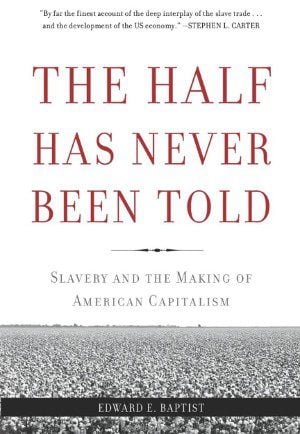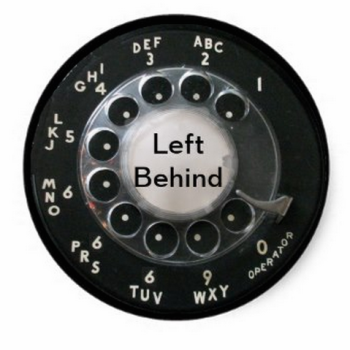On Thursday, June 28, the North American Nanohertz Observatory for Gravitational Waves (NANOGrav) revealed the detection of low-frequency gravitational waves, a historic breakthrough that represents 15 years of searching. Yet, this isn’t the first time that humanity has detected gravitational waves. Scientists have been detecting these ripples in the fabric of space using facilities like the Laser Interferometer Gravitational-Wave Observatory (LIGO) since 2015.
So, with that in mind, why isn’t this just another — inarguably impressive — detection of gravitational waves? The answer is all about three connected qualities: The frequency, the wavelength and the period of gravitational waves, and what these tell scientists about the objects and events that first sent them rippling through space.
This article is a good explainer for us lay people, and I think I sort of kind of partly mostly understand now “why scientists are so excited” about this recent discovery.
But that was the first thing I understood about this news, and the only thing I’m wholly confident I understood about it: “Scientists are excited.” They really, really are. And since I follow a bunch of those scientists on social media, I read all their giddily excited posts and links when this news first broke, trying to figure out what it was, exactly, that had them so abuzz. I think I grasp a bit of that now, but this is very much not my bailiwick and my main takeaway from all of this is still that the people who understand all of this best are very excited. Cool.
This is all a good reminder that even if one is fairly clever, one shouldn’t expect to understand all of the ins and outs of a difficult discipline that isn’t one’s own. That’s a Good Thing, actually, because it’s how we can, collectively, learn and know more stuff than any one of us could ever hope to learn and know on our own. We all benefit from there being experts in fields we haven’t personally spent years studying and, as a layperson outside of those fields, I am happy to defer to those experts.
I am not an astronomer or a cosmologist, but when all of the astronomers and cosmologists go “Ooh! This is exciting!” I can somewhat share their excitement.
It’s quite a bit trickier for us laypeople, though, when there are fierce disagreements among the experts in some discipline. Those disagreements force us to evaluate, as best we can, the various arguments between those experts in an attempt to judge which seem more trustworthy.

Thus, for example, when historians like Johann Neem criticize historians like Kevin Kruse and Julian Zelizer for not sharing Neem’s indignant concernstipation about the popular history of The 1619 Project, we laypeople are forced to decide, with whatever tools are available to us, which side of this dispute seems to be more sensible, reasonable, and supportable.
That attempt, admittedly, may be as dim and flailing as my attempts to understand what the latest news from NANOGrav tells us about dark matter or string theory, but we’re left with no choice.
And so, unless further evidence presents itself, I’m inclined to say that Neem is not just wrong here, but also Very Silly.
Why? Because Neem seems to be arguing that the 1619 Project overstates the pernicious, pervasive, centrality of slavery in American history and such overstatement is barely possible, let alone likely; because Neem’s critique of this is premised on the notion that he has access to records and tools and thought processes that are, somehow, untouched and unaffected by the aforementioned pernicious, pervasive effects of slavery, which is quite the ambitious theological claim; because one does not need to be an expert in any particular discipline to recognize the silliness of both-siderism and reflexively unreflective centrism Neem employs here (even though he shoots himself in the foot with it as he winds up framing slavery/anti-slavery as right/left, with his smugly superior centrism uncomfortably perched atop those slash marks); and because there’s something decidedly off and a bit creepy about Neem’s continuing obsession with the 1619 Project more than four years after those newspaper essays were published.
In short, in my non-expert opinion: Supermassive black holes are cool and slavery was way worse than you’re thinking even if you’re already thinking it was really, really evil and corrosively toxic to everything it infected, which was everything.
• Kudos to Whitworth University. The Spokane-based PCUSA school “has revised its policies to allow for the hiring of LGBTQ faculty and to add sexual orientation to its non-discrimination statement,” RNS reports:
In so doing, it joins a sliver of Christian colleges and universities that have bucked a largely sturdy resistance to hiring married gay faculty. Last year, Eastern University, a Christian school affiliated with the American Baptist Churches USA, made a similar change to its hiring policy.
The “sliver of Christian colleges and universities” referred to there includes Eastern Mennonite University and Goshen College, two schools that previously had been a part of the white evangelical “Council for Christian Colleges and Universities.” It also includes my alma mater, Eastern University. The two Mennonite schools voluntarily left the CCCU when gatekeepers started screaming that they were no longer sufficiently anti-LGBTQ and therefore no longer belonged. The CCCU has placed Eastern on “hiatus.”
This is all a fascinating reminder of the ever-shifting boundaries of white evangelical identity. It is now simply presumed that evangelical means “doesn’t allow for the hiring of LGBTQ faculty.” The presumption is that by adopting these policies, Whitworth, EMU, Goshen, and Eastern have ceased to belong in the CCCU because they have ceased to be evangelical. (This is, of course, not the first time in history that support for the civil rights of others has been presumed to end one’s membership in the category of “evangelical.”)
It’s also an example how any association or affiliation within white evangelicalism can be harnessed and weaponized by would-be gatekeepers. The CCCU wasn’t set up to patrol the boundaries of some peculiar vision of orthodoxy or to enforce some imagined standard of evangelical identity. Like most such associations, it was set up to serve its members, not to threaten them with the loss of that membership if they don’t uncritically support the White Party in every election cycle. But the 180 or so schools that belong to the CCCU thereby become names in a list, and if the vindictive, extremely conditional donors to one of those schools objects to the presence of some other name in that long list, those donors will — as always — indignantly threaten to cut off the extremely conditional support they’ve been extremely conditionally supplying to their beneficiaries.
• This is what I wrote here about Mark Driscoll in 2014: “This is a man who hates women. A lot.”
And this is what I have to say about Mark Driscoll now, in 2023: “This is a man who hates women. A lot.”
• A couple of posts from Erik Loomis on the long, uphill battle to end (most, but not all) child labor in America: “The Time Mother Jones (The Woman) Sent Maimed Children To Shame Teddy Roosevelt” and “This Day in Labor History: June 3, 1918.”
The protest led by Mary Jones was an effort to spare children from having to work 12-hour overnight shifts. It did not succeed, but helped to build momentum for a law banning child labor that was enacted in 1916 and then ruled “unconstitutional” by the Supreme Court in 1918 on the grounds that Congress cannot regulate interstate commerce. Another law banning child labor was enacted in 1919 and then tossed out by the Supreme Court in 1922 for the same reason — i.e., that the Constitution doesn’t mean what it explicitly says, at least when it comes to wealth exploiting labor.
It took another 14 years before finally, in 1938, the corrupt justices of the Supreme Court finally and begrudgingly stopped pretending that Congress doesn’t have the black-letter law powers granted to it by the Constitution.
Then, as now, Supreme Court justices should be presumed guilty unless proven innocent. They are, and have mostly always been, a lawless bunch of hacks.
















